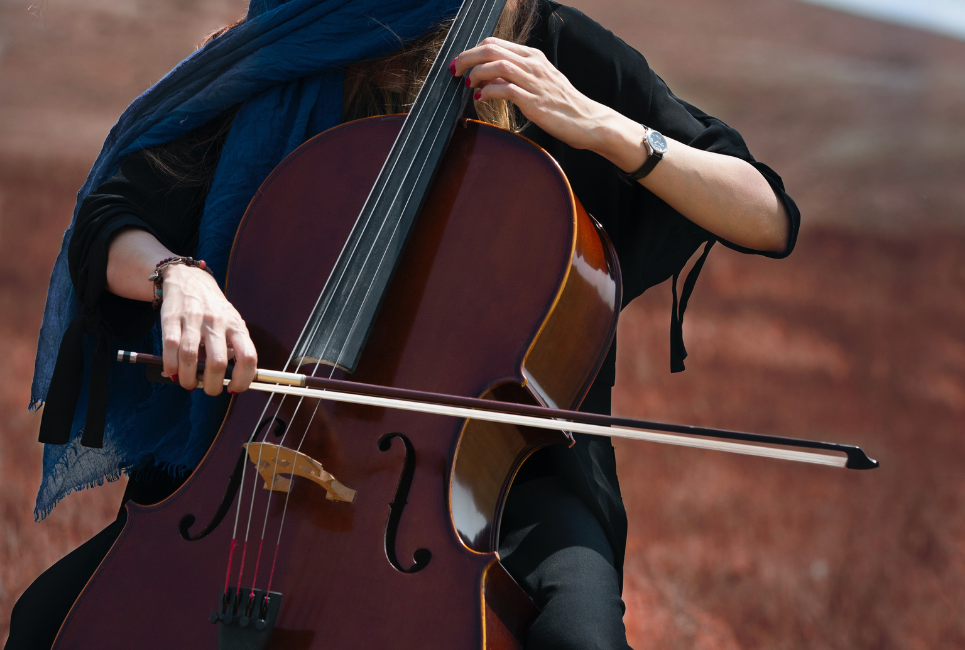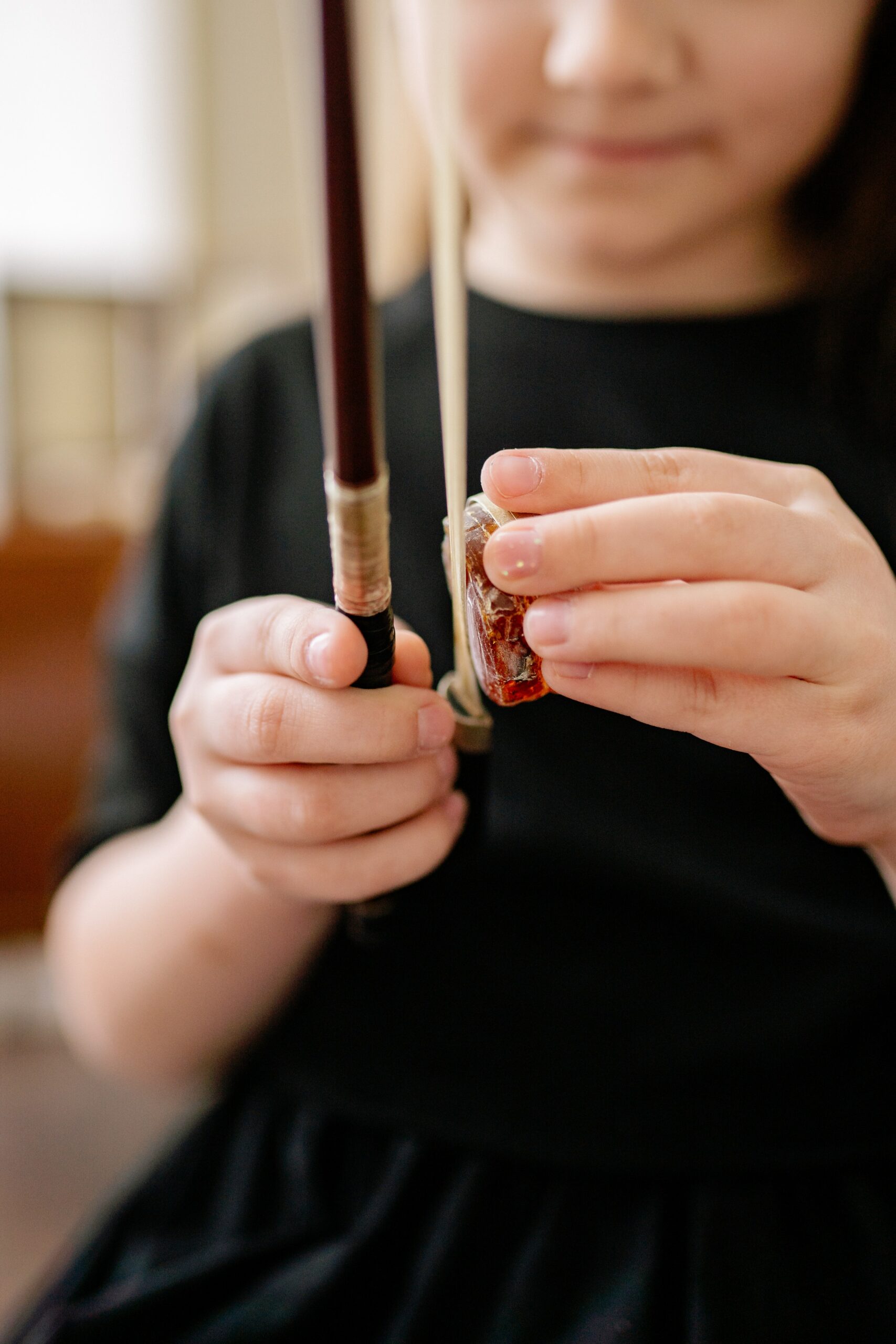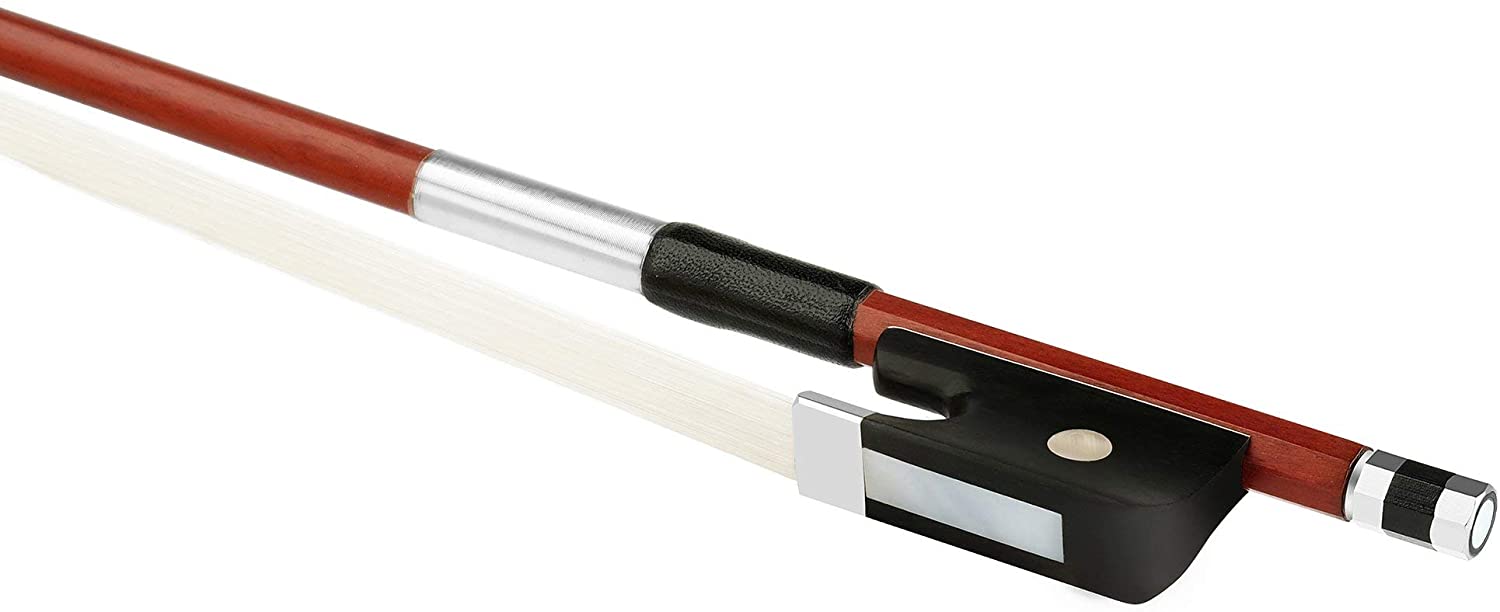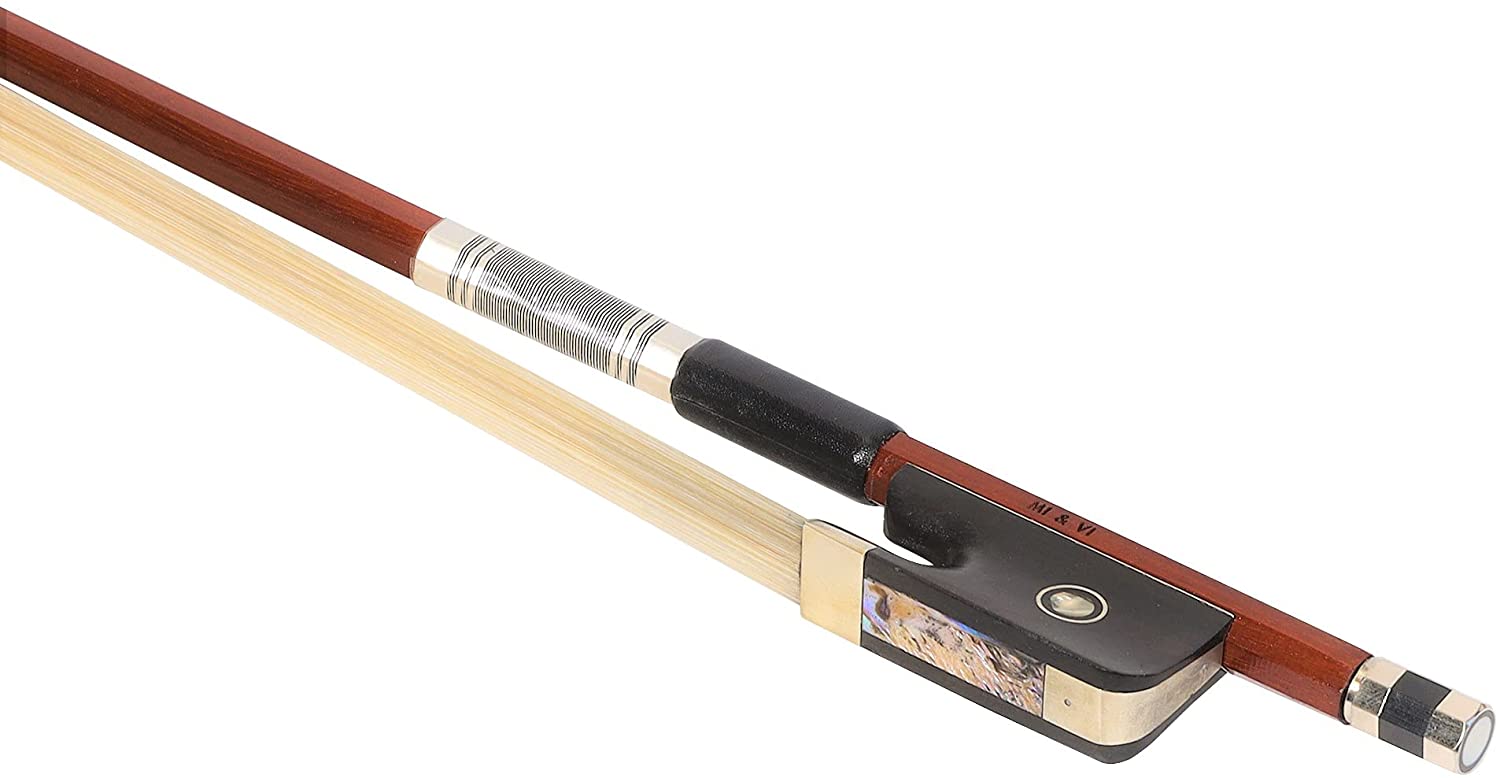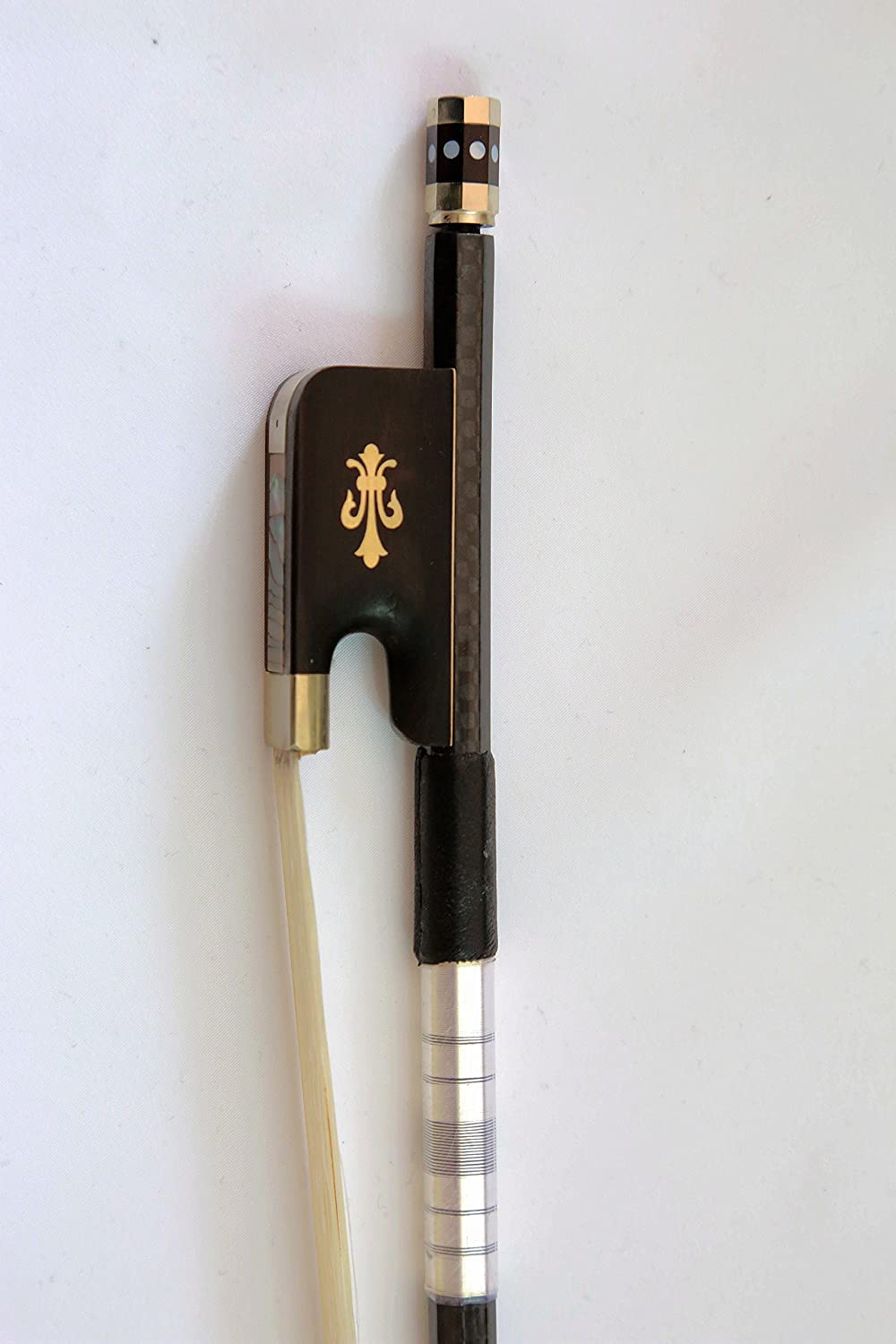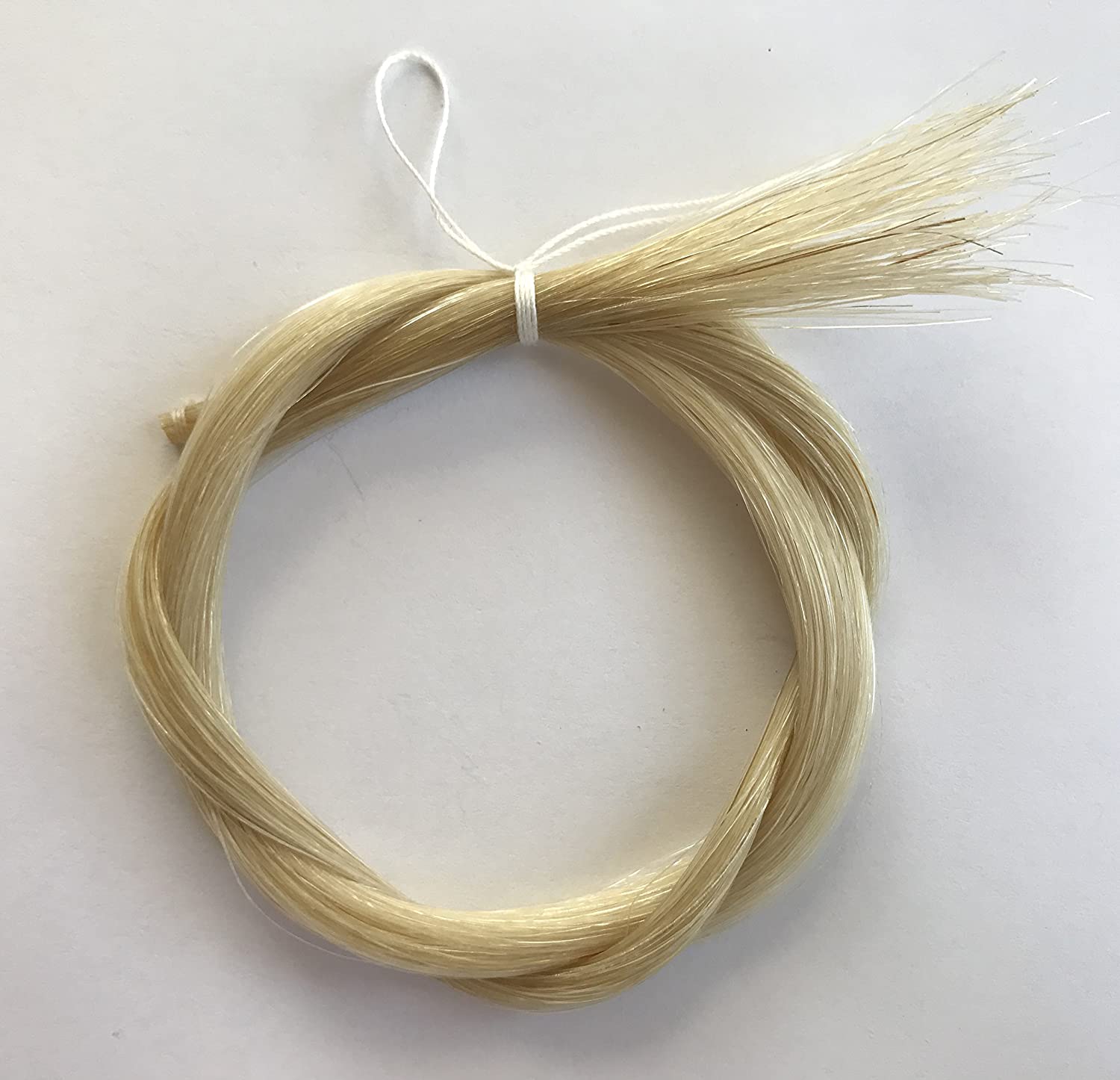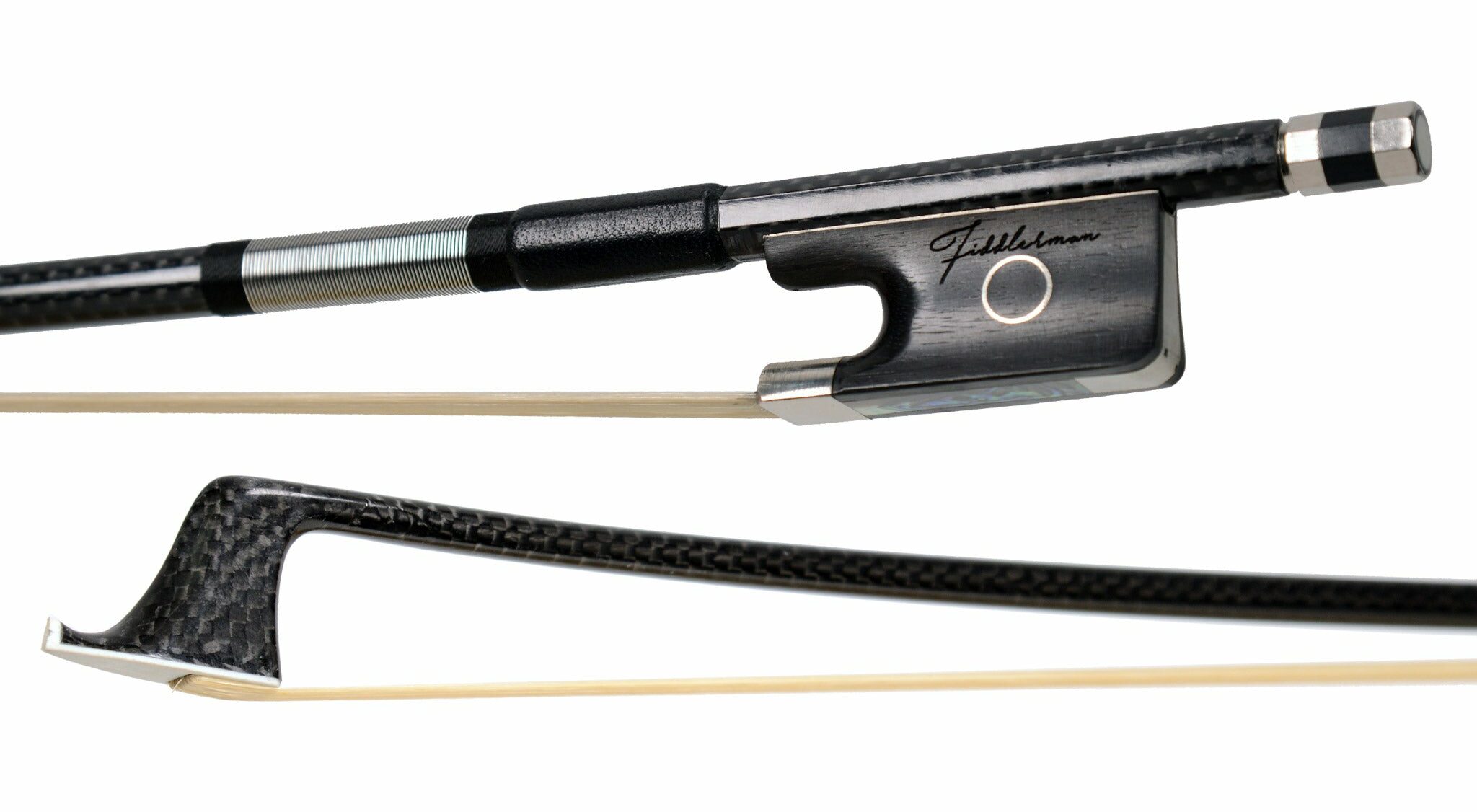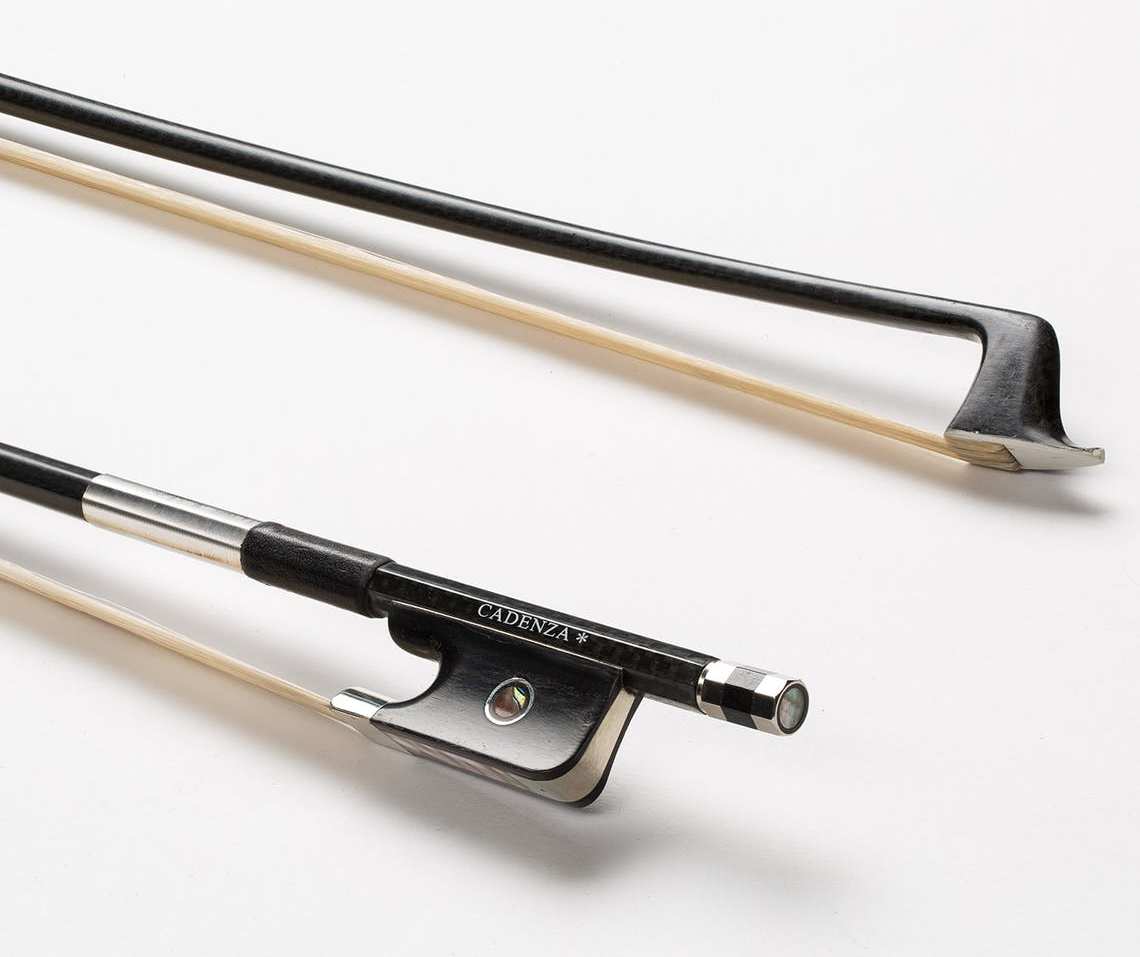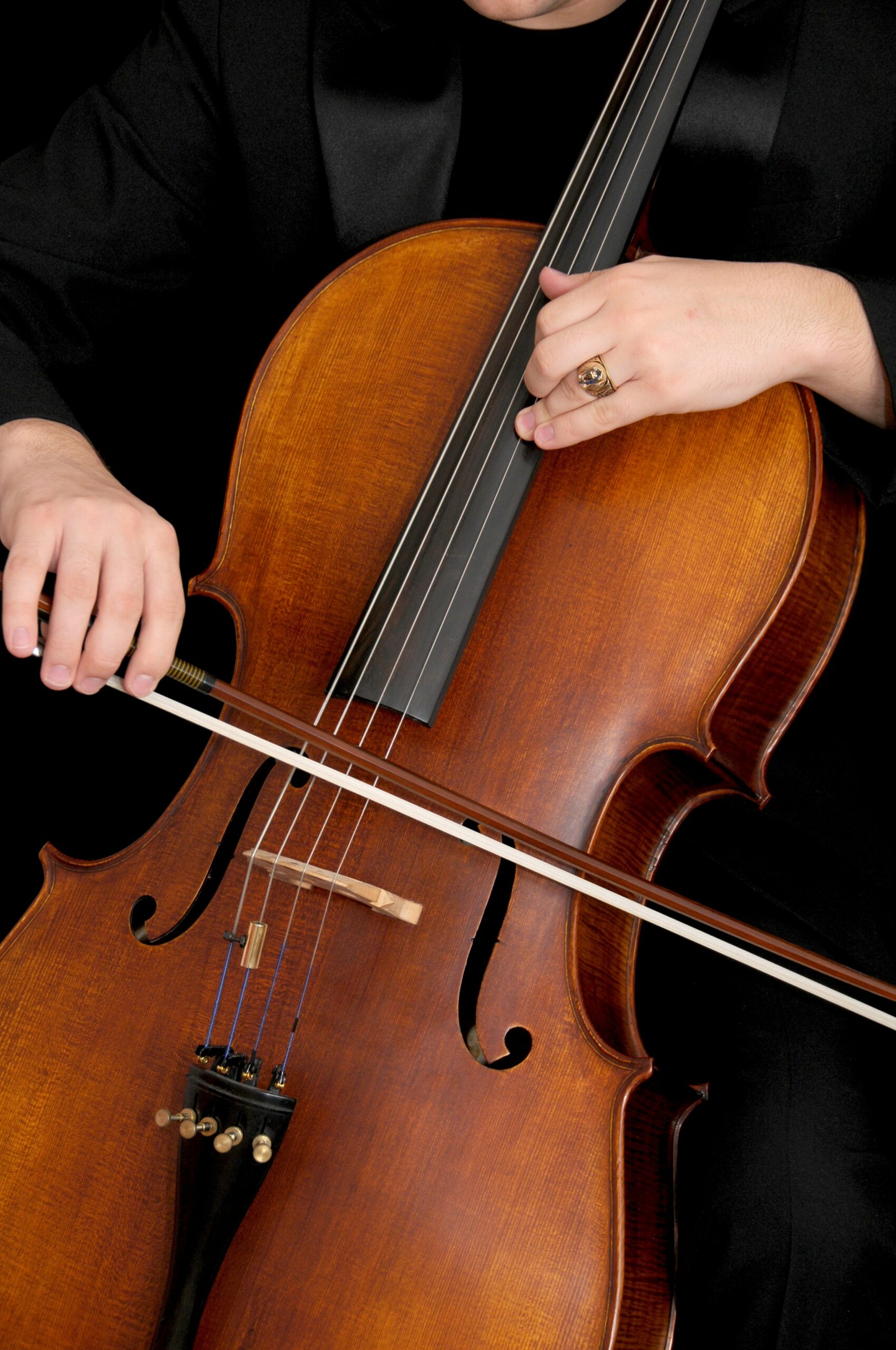- How to Find the Best 5 String Violins - April 19, 2022
- Top Violin Accessories to Consider - April 18, 2022
- Best Left-Handed Violins Guide - April 13, 2022
Summary: If you want to know how to find the best cello bow, then you must consider the materials used for the stick and the hair, the design, and the size. The materials for the stick and the hair should match your musical skill, and the size should match your instrument.
If you want to know how to find the best cello bow, you have already seen a variety of material types, designs, and sizes. You may not know where to begin. Finding the best cello bow comes down to knowing what bows are meant for beginners, intermediate players, and advanced players and, of course, knowing which of those three categories you fall into.
How to Find the Best Cello Bow
When you play the cello, a cello bow can help you with precise movements and subsequently with specific sounds. When you set out to find the best cello bow, you want to consider things like:
- The balance in the bow
- The materials from which the wood and hair are made
- The construction of the bow
- How the bow feels in your hand
Just because a bow is made from the highest quality horsehair or the most expensive wood does not mean it is the best cello bow for you. More expensive and well-designed cello bows are meant for more advanced and professional musicians because they have refined techniques and need warmer, bigger tones brought about by the speed and precision of their bow movements.
Beginners do not have a refined technique to make the most out of these designs. As a beginner, you will not hear any difference with a top-of-the-line cello bow compared to a beginner cello bow because no accessory or instrument can compensate for your skill and talent. Making beautiful music comes from regular practice, not from an expensive accessory.
The type of cello bow you select should be heavily based on your skillset.
| Beginner | You have limited skills, and it is unlikely that different bow materials will make a noticeable improvement in your music. You just need a bow with a good curve and strings. |
| Intermediate | You need a bow that helps you focus on refining your technique, made of slightly higher quality than a beginner cello bow. |
| Advanced/Professional | You need a bow that responds quickly to your technique and helps you produce warmer tones and more volume. |
The Best Cello Bow Material
When you look at cello bows, there are 3 main materials used for the stick:
- Brazilwood
- Pernambuco
- Carbon fiber
Brazilwood
Brazilwood is named because it comes from Brazil. This is not a specific type of wood (like I thought early on) but rather a name given to several types of hardwoods that come from Brazil.
Brazilwood cello bows are best…
- If you are looking to improve your technique and you are an intermediate player or advanced player
Brazilwood cello bows are well known for having excellent balance, making them easy to control. They are also structurally sound and reliable. Again, there are many types of brazilwood subspecies, so that you could purchase two different brazilwood cello bows, and you might even get slightly modified sounds. Intermediate players who are studying music or semi-professional community musicians or orchestra members will benefit the most from a brazilwood cello bow.
Pernambuco
Pernambuco also comes from Brazil, and it is a heavy, dense wood. There are many subspecies of this tree, so you have a range of elasticity, responsiveness, and strength in the cello bow design.
Pernambuco cello bows are best…
- If you are a professional and want a top-tier cello, bow to complement a top-tier cello.
Pernambuco wood is extremely high-quality, and the balance and construction make it very responsive to rapid movements and wrist or arm techniques. For this reason, the design is ideal for professionals who are part of an orchestra or ensemble or perform solo.
Carbon Fiber
Carbon fiber cello bows are among the most common and the most popular. Carbon fiber is made with different grades and bonded with resin, so they are durable and have a longer lifespan. Carbon fiber cellos bows are perfect for people who are not as gentle with their bow as a professional or who do not play often enough to need more significant investment. Carbon fiber is very strong and very durable, so that it will last a long time.
Carbon fiber cello bows are best…
- If you are a casual cellist, and you only take music lessons once per week or less, the material and construction can be something sturdy and reliable but not necessarily top of the line.
- If you are getting a bow for a beginner or student who needs something durable. When I was a young musician, and when my kids were young musicians, they constantly dropped their bows on the floor, sometimes even stepping on them. Carbon fiber cello bows will help prevent serious damage when this invariably happens.
Cello Bow Sizes
When selecting the best cello bow, you need to pick one that works with the instrument size you have. Below is a table that offers the average bow length for each corresponding cello size:
| Cello Size | Average Ave | Average Height | Average Arm Length | Bow Size |
| 1/10 cello | 3-5 years old | 3′ | 16″ | 17.5 inches for bow length |
| ⅛ cello | 5-6 years old | 3′ to 3’6″ | 16″ to 18″ | 20.75 inches for bow length |
| ¼ cello | 6-7 years old | 3’6″ to 4′ | 18″ to 20″ | 23.75 inches for bow length |
| ½ cello | 8-10 years old | 4′ to 4’6″ | 20″ to 22″ | 25.5 inches for bow length |
| ¾ cello | 11-13 years old | 4’6″ to 5′ | 22″ to 24″ | 27 inches for bow length |
| 4/4 full cello | 14 and older | 5’+ | 24″+ | 28 inches for bow length |
You can see in the table above that choosing the right-sized cello can be done based on your age, height, or arm length. Once you pick the right cello size, then you can select an appropriate size. However, if you have a 3/4 size cello but an arm’s length exceeds 24 in, I recommend you try playing your cello with different cello bow sizes like 27 inches and 28 inches until you find the one you like best. You are not required to use the bow size associated with your cello size; it is just a good place to start when finding the best cello bow.
Hair for a Cello Bow
In addition to the materials for the stick, you also must consider the materials for the hair. You will typically find two types of hair options for a cello bow:
- Horsehair
- Synthetic
Synthetic hair does not grip rosin as well, and synthetic hair will change the tone produced by your instrument compared to natural horsehair. This is not something you necessarily need to worry about as a beginner. Still, synthetic hair that does not grip rosin will not glide as easily across your cello strings, so you might find it frustrating when you are starting because the instrument does not respond the way you want it to.
Most cello bows are made with horsehair.
Yes, it is hair from a horse. When I first learned that it was really horsehair, I cried to my mother because I thought that they hurt the horses to get the hair. This is far from accurate. Horsehair is usually gathered from a specific type of horse, taken from their tail hair after they have died of natural causes.
As you advance in skill, the type of hair used becomes more important. Mongolian hair can come in black or unbleached varieties, which is why you will typically see cello bows that have either black or white hair. Mongolian horsehair is ideal for more advanced performers. And at this level, you will likely see delineations between horsehair taken from a male or female horse. Remember, horsehair is usually taken from the tail, so hair that comes from a female horse is better quality, marginally, over that taken from a male horse for reasons I hope I do not have to explain. Suffice it to say, female tail hair is usually purer and not as tainted by a lifetime of exposure to a particular liquid.
Fully or Half Lined Cello Bows
Once I started taking music classes regularly and not just once per week, I thought it was time to reward myself with a better cello bow. At that point in my musical education, I thought I knew a lot more than I did. So, you can imagine my surprise when, thinking I knew everything about cello bows, I was shocked to read a product description that said: “half lined.” I had no idea what that meant. Did I want only half the lining? Did all bows come with half lining?
Let me break it down for you in case you are just as confused as I was. The half lining is something you typically see on advanced cello bows. This refers to a metal lining made of silver or nickel that is fitted to the top of the frog. This enables your frog to seamlessly glide across the surface of your stick when you tighten or loosen the hair.
- If you have a Pernambuco cello bow or a Brazilwood cello bow, you probably already have half lining and do not realize it.
- If you have a French cello bow, the heel plate is inlaid with very similar metal.
My Favorite Cello Bows
While choosing a cello bow can be an individual affair, some people prefer to their bows online by brand rather than testing them out individually. For this case I’ve rounded up my favorite cello bow picks that you can find online! My criteria included the reviews, value to the price tag, and my own personal experience.
Top Pick – Fiddlerman Hybrid Cello Bow
The Fiddlerman Hybrid Cello Bow combines the look and feel of a Percanumbo bow, with the durability of a carbon fiber bow. This bow features a carbon-fiber core similar to their carbon fiber and carbon fiber weave bows but is wrapped in a Pernambuco veneer for that signature wood look. It’s perfectly balanced for both a new and intermediate musician to take advantage of. It’s also inexpensive in comparison to other bows of this style. I particularly like how this bow looks, it’s so snazzy and will pair well with any cello.
Pros
- Carbon fiber core for a strong stick
- Genuine Siberian horsehair
- Lightweight and well balanced
- Inexpensive
Cons
- The leather wrap on their bows often comes off or becomes loose
Brazilwood Pick
Yamaha is well known for making quality band instruments, electric violins, and cellos. So it only makes sense that they would also make various cello bows. This brazilwood bow is a great entry-level cello bow for the new student. It’s not the highest quality you can find. Still, it’s well balanced and made from quality horsehair with nickel-silver winding and a leather grip. It’s also very inexpensive and easy to replace if it gets lost or broken, which is fantastic for students.
Pros
- From a well-known brand
- Inexpensive and easy to replace if lost or broken
Cons
- Not the highest quality bow
- Only suitable for a beginner
Carbon Fiber Pick
Cadenza bows are from the same makers as Eastman Strings, well known Orchestral strings brand. Like their instruments, they also hold their bows to a high standard. My favorite bow is the Cadenza One Star. Its gorgeous student-level carbon fiber bow, with excellent response and tone. The stick has a subtle texture that tells me it’s made from weaved carbon fiber, giving it a boost in durability. The horsehair is also of excellent quality and should last a student around a year; this is worth re-hairing a few times to get the most out of it.
Pros
- Durable carbon fiber weave, great for students.
- Quality bow worth re-hairing for a few years
- Made by Eastman Strings, well-known and trusted string instrument makers.
- Well balanced and lightweight
Cons
- More expensive than other bows with similar offerings
Percanumbo Pick
DZ Strad makes various student-to-professional model string instruments. While I wouldn’t consider this brand the highest quality, they make some fascinating instruments that are great for intermediate players or lifetime hobbyists. Their bows are some of their better products, and they have something for everyone, no matter what level you play at. Their Model 700 Pernambuco bow is rather expensive. Still, if the quality matches the price tag, you will have a bow worth playing for many years. This bow is well balanced and lighter than the Carbon Fiber Hybrid bow, richer and more powerful tone.
Pros
- Perfect for the advancing hobbyist or intermediate player
- Lightweight and well balanced
- Made with top materials, including unbleached Mongolian horsehair
- Quick response and powerful tone
Cons
- Very expensive
- Not as durable, not suitable for young students
Fun Pick
Who said cello bows can’t be fun! Suppose you are a fan of the musical group The Piano Guys. In that case, you might already know that they have their own line bows for the Violin, Viola, and Cello. These bows come to have 4 different price points, and each features a different color stick and horsehair. Their entry-level bow Bruce is a carbon fiber stick with black Mongolian Horsehair. It’s a pretty basic bow but makes an excellent present for a growing cellist if they are a fan. The Luke is a slightly upgraded bow with a shimmery silver stick and Green Mongolian Horsehair. This bow gives me space alien vibes, and I am here for it.
Their next bow, the Ziggy, has been used by famous violinist Lindsey Stirling in her music video You’re a Mean One, Mr. Grinch. The red carbon weave stick and bright red Mongolian Horsehair really gave this bow a Christmas vibe. If you play a lot of Christmas shows, the Ziggy adds a festive touch. The Luke and Ziggy remind me of Star Wars lightsabers, and it would be excellent in a music video cover. Their top-of-the-line bow, the Carmen, is my favorite, but it’s also the most boring in terms of color. The stick is black with subtle red braiding the horsehair is pure white from a Stallion. Everything about this bow is upgraded from the stick construction to the bow frog. While expensive, this bow is worth keeping in your case for a lifetime.
Pros
- Fun colored bows
- Great for themed videos or events
- Designed and tested by famous cellist Steven Sharp Nelson
- Lifetime warranty
- Piano Guys Magic Rosin for sale to create a bundle gift
- A cool gift for a growing musician
Cons
- Expensive compared to bows of similar quality
- The colored horsehair on the Bruce, Luke, and Ziggy needs to be specially ordered for replacement.
- Stands out within an orchestra or ensemble
Conclusion
In conclusion, finding the best cello bow comes down to finding a bow that fits your frame and your instrument first and foremost. Once you know the size you need, you can choose the wood material and the hair that match your musical skills. As you progress with your cello, you might need to upgrade your bow (and your other accessories) to make the most out of your technique. Still, a basic cello bow that fits your arms and instrument is best when you are first starting.
FAQ
Answer: A cello bow will vary in size based on the respective size of your instrument. Cello bows range in length from 17.5 inches through 28 inches. Your bow needs to fit well in your hand and work with your arm span and your instrument. If you have a full-size cello, usually reserved for people 14 years and older, then you should have a larger 28-inch bow. If you play on a ¾ sized cello, usually for younger teens, then a 27-inch bow is best. On average, a cello bow weighs only 80 grams.
Answer: The “best” cello bow is the one you can perform without actively thinking about it. A good cello bow functions as a natural extension of your arm, so it should be something that flows with your movements without you having to focus on the bow consciously. The right bow will fit your size and the size of your instrument and give you the power to improve your music. A bow should not make playing the cello harder but easier. With the best cello bow, you will be able to identify shortcomings in preparation and skill without having to worry that your shortcomings are because of your instrument for tools.
Answer: Violin bows and cello bows are a bit different. They are both made of different materials, such as Brazilwood or carbon fiber, and they both can have horsehair or synthetic hair. However, violin bows are smaller than cello bows. Violin bows usually weigh 60 grams compared to 80 grams for a cello bow. Cello bows are shorter and thicker than violin bows. However, if you or a member of your family is starting with a fractional-sized cello, and cello bows are too big or do not balance well, then you might consider a smaller violin bow as an alternative. Your bow should be perfectly balanced on both ends and feel like a natural extension of your hand. If it does not, then you can invest in a violin bow until you or your family member grows into a cello bow.
Looking for more interesting readings? Check out:

